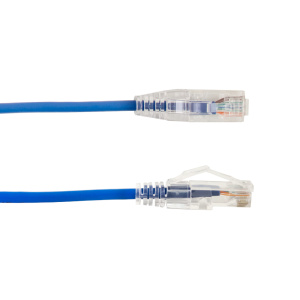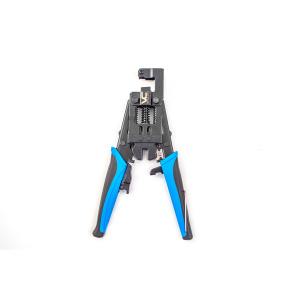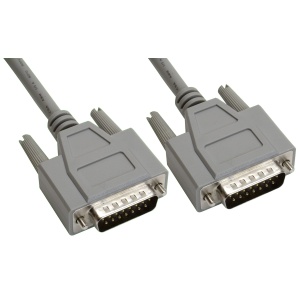Introduction
Imagine the human nervous system. Much like our network of nerves transmitting signals throughout our body, an electrical grid serves to distribute power to our homes, industries, and services. The essence of this power transmission? Cables. Specifically, when it comes to medium voltage applications, choosing the right cable becomes paramount to the installation’s overall efficiency and safety. But how does one navigate the labyrinth of medium voltage cables?
Look no further! Welcome to the comprehensive guide to choosing the right medium voltage cable for your installation.
A Comprehensive Guide to Choosing the Right Medium Voltage Cable for Your Installation
Understanding Medium Voltage Cables
Before diving headfirst into the pool of technical specifications, let’s wade into the shallow end first. What exactly are medium voltage cables?
As the name suggests, medium voltage cables are a category of cables used to transmit electrical power. The Electric Power Research Institute (EPRI) defines these as cables designed to handle voltages between 1kV to 35kV. They are essential for distributing power to urban areas, industrial complexes, and off-grid installations.
By understanding their role, we can better appreciate the importance of choosing the right medium voltage cable for your installation.
The Core Aspects of Medium Voltage Cables
Now, let’s explore the anatomy of a medium voltage cable. It consists of three main components:
- Conductor: This is the cable’s heart, responsible for transporting electrical power. Materials like copper and aluminum are frequently used due to their excellent electrical conductivity.
- Insulation: Acting as a safety barrier, insulation prevents electrical faults and fires. It’s usually made from materials like cross-linked polyethylene (XLPE) or ethylene propylene rubber (EPR).
- Sheath: The outermost layer that protects against environmental and mechanical damage. It’s typically made from PVC or other similar materials.
Understanding these components aids in choosing a cable suited to your installation’s specific needs.
Cable Types and Applications
There are several types of medium voltage cables, each suited for different applications.
Single Core Cables
Single core cables are often used in high voltage Direct Current (DC) installations like photovoltaic power stations. Their simple design makes them cost-effective, easy to install, and great for compact environments.
Three Core Cables
Three core cables are used primarily in Alternating Current (AC) systems, providing power to three-phase electrical devices. They are a common sight in industries and urban power networks.
Knowing where and how these cables are used can help you make an informed decision on the right medium voltage cable for your installation.
Key Factors in Cable Selection
Several factors need to be considered when choosing a medium voltage cable:
- Voltage: The voltage rating of the cable must be suitable for your system’s voltage.
- Current: The cable must be capable of handling the expected current load.
- Environment: The cable should be resilient to the environmental conditions it will be subjected to.
- Regulations: The cable must comply with local and international standards and regulations.
Taking these factors into account can help ensure a safe and efficient cable installation.
Choosing the Right Conductor Material
Selecting the correct conductor material is vital to the performanceand longevity of your medium voltage cable installation. The two most common choices are:
Copper Conductors
Copper, with its superior conductivity and tensile strength, is a popular choice for medium voltage cables. It’s also highly resistant to corrosion, adding to its lifespan. However, copper is a pricier option, which might factor into your budget considerations.
Aluminum Conductors
Aluminum conductors are lighter and more affordable than copper. However, they have lower conductivity and are more susceptible to corrosion. Nevertheless, in certain applications where weight and cost are considerations, aluminum may be the preferred choice.
Deciding between these two largely depends on your specific requirements and budget.
The Importance of Correct Insulation
When it comes to medium voltage cables, correct insulation is not a luxury, but a necessity. It safeguards the cable against electrical leakage and prevents possible faults.
XLPE Insulation
Cross-linked Polyethylene (XLPE) is the most common insulation material for medium voltage cables. It’s excellent at withstanding high temperatures and has good chemical resistance.
EPR Insulation
Ethylene Propylene Rubber (EPR) is another frequently used insulation material, known for its elasticity and durability.
The choice of insulation often comes down to the specific needs of your installation and the environmental conditions.
Shielding: An Extra Layer of Protection
Shielding is an additional layer that provides extra protection for your cable.
Metallic Shielding
Metallic shielding, often composed of copper tape or wire, serves to equalize the electric field around the conductor, reducing the risk of electrical discharge.
Non-metallic Shielding
Non-metallic shielding, usually made from semi-conductive materials, serves a similar function. The choice between metallic and non-metallic shielding depends on your installation’s specific requirements.
Understanding Cable Standards and Certifications
There are several cable standards and certifications that your cable should comply with, like:
- IEC 60502: International standard for power cables.
- UL Standards: Underwriters Laboratories (UL) standards for safety.
Complying with these standards ensures your cable installation meets safety regulations and provides peace of mind.
FAQs
What is a medium voltage cable?
Medium voltage cables are designed to handle voltages between 1kV to 35kV. They are crucial for power distribution in various areas including urban locations, industrial complexes, and off-grid installations.
How do I choose the right medium voltage cable for my installation?
You need to consider factors like voltage, current, environmental conditions, and local and international regulations. Additionally, the type, conductor material, insulation, and shielding also play a part in the decision.
What are the main components of a medium voltage cable?
The three main components of a medium voltage cable are the conductor (which transports the power), insulation (which acts as a safety barrier), and the sheath (which protects against environmental and mechanical damage).
Why is the correct insulation important in medium voltage cables?
Correct insulation safeguards the cable against electrical leakage and prevents potential electrical faults. It’s essential for the safety and efficiency of the cable installation.
What are some of the cable standards and certifications I should look for?
Your medium voltage cable should comply with various standards and certifications, such as IEC 60502 and UL Standards. These ensure your cable meets safety regulations.
What’s the difference between copper and aluminum conductors?
Copper conductors offer superior conductivity and tensile strength and are highly resistant to corrosion. However, they’re more expensive. Aluminum conductors are lighter, more affordable but have lower conductivity and are more susceptible to corrosion.
Conclusion
Choosing the right medium voltage cable for your installation can seem like an insurmountable task. However, with a comprehensive understanding of cable types, materials, and regulations, the process can be a walk in the park. Ultimately, your choice should be dictated by your specific installation needs, the environmental conditions, and your budget constraints.
Remember, the heart of a successful and safe electrical installation lies in the careful selection of the right medium voltage cable. Use this guide as your compass to navigate the complex world of medium voltage cables, ensuring a safe, efficient, and reliable power distribution system.












